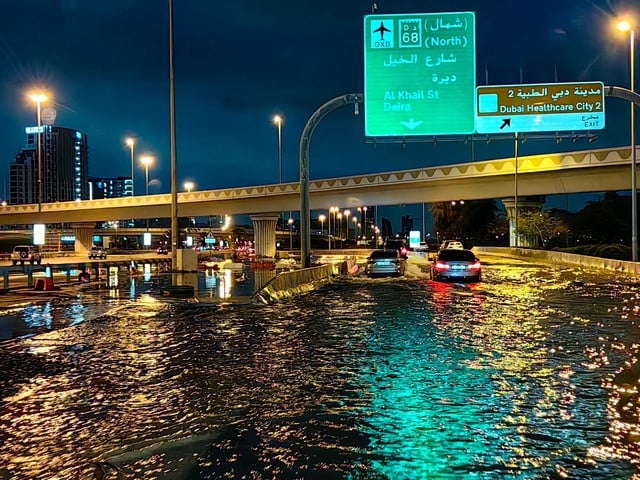Record-breaking rainfall has wreaked havoc in the United Arab Emirates (UAE) and the wider Gulf region, causing significant flooding and disruption, including at Dubai’s international airport.
On Tuesday, Dubai experienced over 14cm (5.6 inches) of rainfall, equivalent to what the city typically receives in a year-and-a-half. This deluge overwhelmed Dubai International Airport, one of the busiest airports globally for international travel.
The intensity of the downpours was unprecedented, with the state-run WAM news agency describing it as a historic weather event, surpassing any recorded rainfall since 1949.
The impact of the rainfall was felt across the UAE, prompting the closure of schools and government orders for employees to work from home. At the airport, arrivals were temporarily halted due to standing water on taxiways, making it difficult for aircraft to land and passengers to reach terminals.
Describing the situation as “absolute carnage,” one couple highlighted the challenges faced by travelers, including the inability to find transportation and having to seek refuge in metro stations and the airport itself.
The aftermath of the rainfall continued into Wednesday, with Dubai International Airport reporting limited transportation options and acknowledging that recovery efforts would take time. Flight operations were disrupted, and the city’s driverless Metro system was affected by flooding.
Efforts to mitigate the flooding included deploying tanker trucks to pump away water from streets and larger roads. Despite these efforts, some individuals were forced to evacuate flooded homes, while others sought refuge in flooded vehicles.
Tragically, a 70-year-old man lost his life in Ras al-Khaimah when his vehicle was swept away by floodwaters, highlighting the dangers posed by the extreme weather conditions.
The heavy rainfall was particularly severe in Fujairah, an emirate on the UAE’s eastern coast, where 14.5cm (5.7 inches) of rain fell. Reports suggested a possible link between the extreme weather and cloud seeding operations conducted by the government to enhance precipitation.
However, skepticism was expressed by weather experts regarding the effectiveness of cloud seeding in causing such intense downpours. Some meteorologists attributed the increased rainfall to climate change, predicting a rise in precipitation in the region.
While rain is unusual in the arid climate of the UAE, it does occur periodically, especially during the cooler winter months. Nevertheless, the magnitude of the recent rainfall event and its impact on infrastructure underscored the challenges posed by extreme weather events in the region.
In neighboring Oman, heavy rains also resulted in casualties, including schoolchildren and adults swept away in floodwaters, highlighting the widespread impact of the extreme weather across the Gulf region.




















